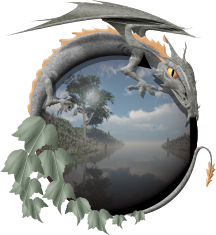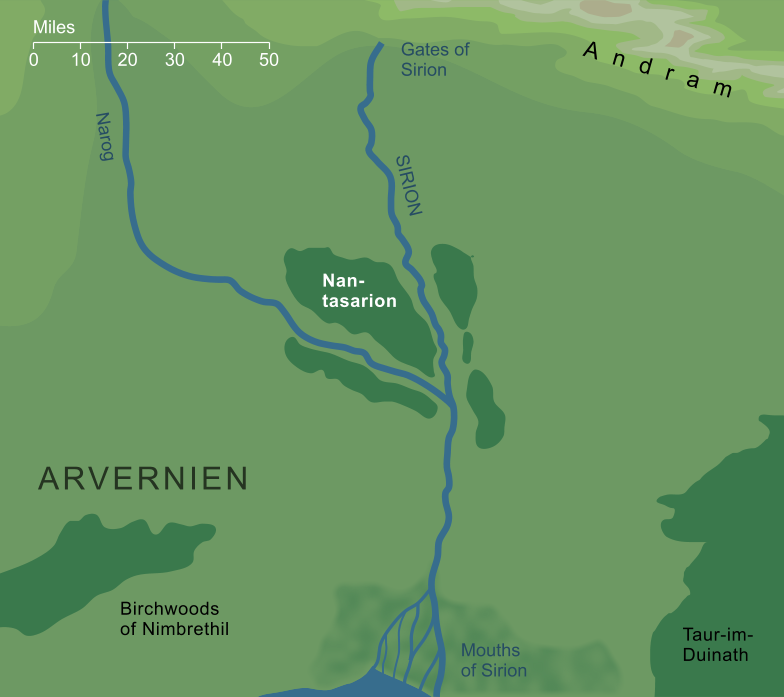- Cities and buildings
- Fields, plains and deserts
- Forests
- Hills and mountains
- Islands and promontories
- Lands, realms and regions
- Rivers and lakes
- Seas and oceans


 |
||||||
|


Which personality type are you?
Take the Free mydiscprofile Personality Test to discover your core personality and your ideal job.   Which personality type are you? |
|
Dates
Destroyed at the end of the First Age
Location
At the confluence of the rivers Sirion and Narog, some sixty miles northward of the Mouths of Sirion
Source
Sirion flowed into the valley from the north
Tributaries
Outflow
Sirion flowed on southwards
Pronunciation
na'n-tasa'rion
Meaning
'Valley1 of willows'
Other names
Indexes: About this entry:
|
Nan-tasarionA name for the Land of Willows
At the place in southwestern Beleriand where Sirion was joined by the strong waters of Narog, the great river began to widen and slow. Along the quiet banks on this part of Sirion's course clustered drooping willow trees, as well as flowers of all kinds, while the waters of the river were crowded with the green pads of water-lilies. This wide vale of willows lay under the protection of the Vala Ulmo, and was considered a place of special beauty and healing by the Elves, who valued it especially for the music of the wind whispering through the branches of the riverside willow trees. In the Sindarin tongue most widely spoken across Beleriand, this Land of Willows was commonly known as Nan-tathren. Nan-tasarion was the Quenya version of this name, used poetically by the Ent Treebeard, who had visited this place in ancient times. An alternative Quenya name was Tasarinan, and all these names literally mean 'valley of willows' but are more usually translated as 'Land of Willows'. The beauty and peace of the Land of Willows was beguiling to the Elves. When the messenger Voronwë was sent out by Turgon on a mission to Círdan in the south, he became entranced by the vale. Voronwë forgot his quest for a time before eventually setting out again, riding down the river on a raft that carried him on to Sirion's Mouths. After the Fall of Gondolin, the survivors of that city also passed through this land, among them Tuor and his young son Eärendil. It was said that a song sung by Tuor to his son in this place awoke the Sea-longing in the heart of Eärendil, and that longing would eventually lead him across the Great Sea to Aman. As Morgoth's gradual conquest of the lands of Beleriand continued southward, his Orcs and wolves reached as far as the willow-shadowed valley. They thus came perilously close to the few survivors at the Havens of Sirion, some sixty miles downriver from Nan-tasarion. In the last years of the First Age, Morgoth's advance was finally checked when the Valar answered Eärendil's plea, and sent a force against the Dark Lord. Nan-tasarion did not survive the War of Wrath that followed, and - like most of the surrounding lands - was swallowed by the Great Sea. Nonetheless, even thousands of years later, it was fondly remembered by those who had heard the wind in its willows. Treebeard remembered it in song, and Galadriel hoped that one day in the far future she would walk there again, after it had been raised from the depths of the ocean in the remaking of the world.2 Notes
See also...Indexes: About this entry:
For acknowledgements and references, see the Disclaimer & Bibliography page. Original content © copyright Mark Fisher 2002, 2019, 2022. All rights reserved. For conditions of reuse, see the Site FAQ. Website services kindly sponsored by Discus from Axiom Software Ltd.Discus' intelligent text reporting helps you to explore a DISC profile from every angle. |